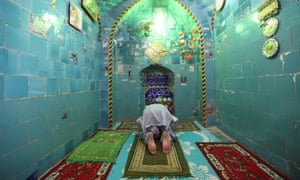Link
The Syrian opposition has accused the Assad government of using UN-backed local truces to carry out “ethnic and political cleansing on an unprecedented scale".
The comments come a week after the Damascene district of Daraya surrendered to the government. The area has been besieged, starved and bombarded from the air over the past four years, leading its population to drop from over a quarter of a million to just 4,000. In that period, only one UN aid convoy reached the besieged enclave.
Speaking on state television, Syrian national reconciliation minister Ali Haidar said: “Daraya is a domino, and after that others will fall,” adding that such regions could not "remain isolated cantons that pose a threat to the state".
The remaining population of Daraya was transferred north to Idlib province. The same is happening in Moadamiyah, another suburb of Damascus that infamously suffered a sarin gas attack in 2013 in which 1,500 people died.
This pattern led UN envoy to Syria Staffan de Mistura to comment: “There is clearly a strategy at the moment to move from Daraya to other besieged areas in a similar pattern.”
Last month, the UN labeled just under 20 regions, with a combined population close to 600,000, as besieged.
UN aid chief Stephen O’Brien, for his part, said: "What happened in Daraya should not be precedent-setting for other besieged areas in Syria." He emphasized that “all sieges, a medieval tactic, must be lifted".
The head of the Syrian opposition negotiation team in Geneva, Riyad Hijab, went further still, claiming the UN was inadvertently facilitating the process. “These local truces are paving the way for ethnic and political cleansing on an unprecedented scale,” he said.
"The Syrian regime, along with its Russian and Iranian allies, is relentlessly pursuing a malicious plan to orchestrate extensive demographic shifts across Syria."
This is not the first time the Assad government has been accused of implementing demographic change in the war-torn country. A report by the Syrian Network for Human Rights found that of the 56 sectarian or ethnic massacres between 2011 and 2015, 49 were perpetrated by the government.













